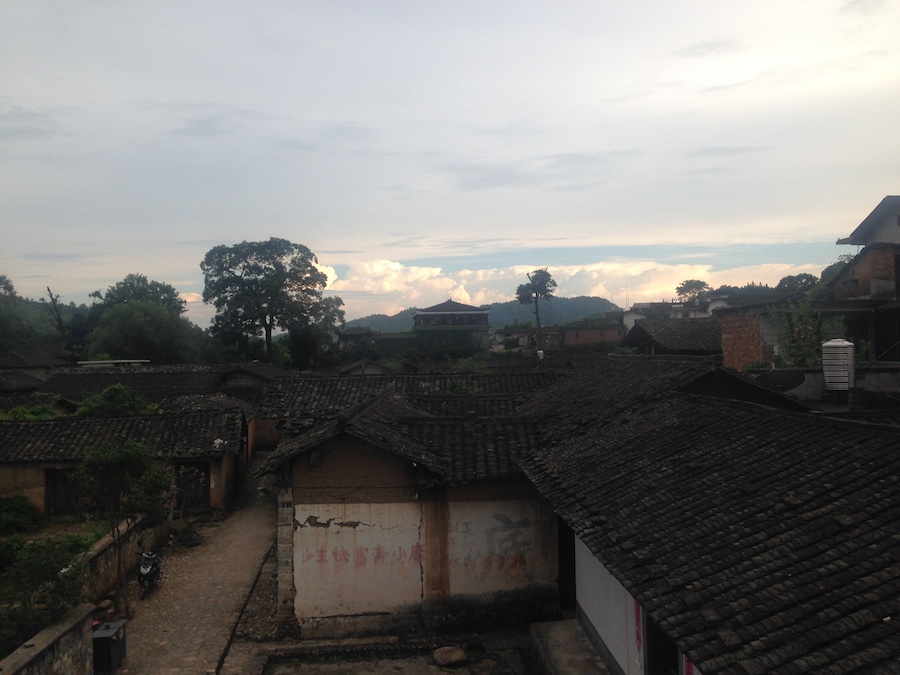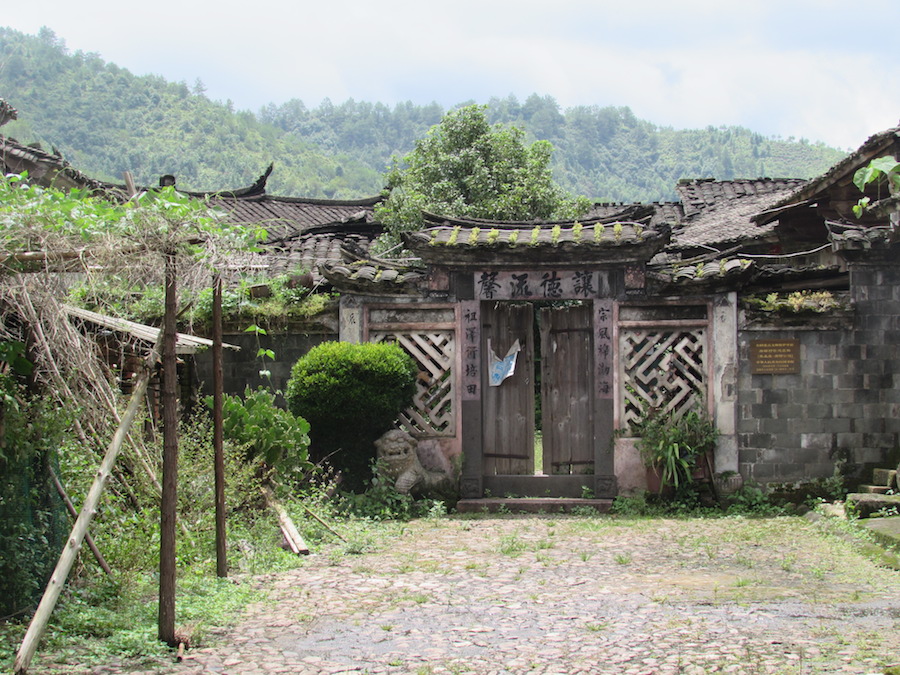There are few places left in this world that still look and function as if time forgot them. Tucked away in Guanzhai Mountains in China’s Fujian province, Peitian Village provides this uniquely obscure experience.
Just as the mountains layer on top of one another and fade into distance, the rooftops in this architectural haven similarly steep and wane before the eye, just as they did 800 years ago.

Dating from the Ming and Qing dynasties, the age of the buildings of blackish grey bricks are only betrayed by nature’s touch, which has seeped into their very foundations over the years; the dark rooftops sprout mini gardens, while the exterior walls enjoy an ombre effect in blackish green.

Despite this intrusion, the vast majority of the structures – temples, mansions, academies – still represent their original purpose. It can only be the residents’ conservation of cultural customs that is to thank for this legacy.

For example, a stroll along almost any of the village pathways will bring you across the traditional practice of calligraphy. Each tiny radical that makes up a character tells its own story, contributing to a much larger concept when combined with others.
Red paper couplets adorned with such calligraphy border most doorways, greeting visitors with a meaningful poetic value depending on the time of year.

As you wander wide-eyed past stone lions, free roaming chickens or laughing local children, be sure to attempt to keep bearings. Due to Peitian’s distinct design, its similarity to a labyrinth will not be lost on you (pun intended).

Doors of temples lead to modern-day houses, open onto rooftop courtyards and redirect you into personal herb gardens. They may just look like forgotten ancient buildings, but many house the infrastructure for the cultural practices that uphold important Hakka traditions.
There are halls for sacrificial rites, venues for martial arts and performing arts, and rooms to host political organisations and official clan meetings.

The ancient highway that passes through the village, once a fundamental access route for the commercial and trade industry, remains vital to the residents who continue to visit the bordering towns for work, supplies and medical services.

When entering Peitian from the main archway, you’ll also come across a waterwheel that has fed the system which runs throughout the entire village to the outer edge of the cobblestone road for hundreds of years.


This juxtaposition of historic and contemporary is quite unique to Peitian. No matter how much time passes, it continues to feel like an untouched civilization and ecosystem.
A vantage point for a bird’s eye view of the village (which some tour guides don’t know about) offers an excellent perspective of this purity.

On the opposite side of the town to the waterwheel is another famous archway. Go through it and follow the curved road to the right for about five minutes until you reach some nicely paved cobblestone steps. These will guide you up to two different and absolutely breathtaking panoramic viewpoints, showcasing all Peitian, some of its neighbouring towns and the deeply arresting mountain range.

Once you’ve had your fill of the view, head back into town and try the homemade jams or stop by the shops that sell handmade scarves using traditional techniques. A place as naturally giving as this deserves a little of your hard earned Hong Kong cash.
How to get there:
Got a tip? Send it to us at hongkong@coconuts.co.





Reader Interactions